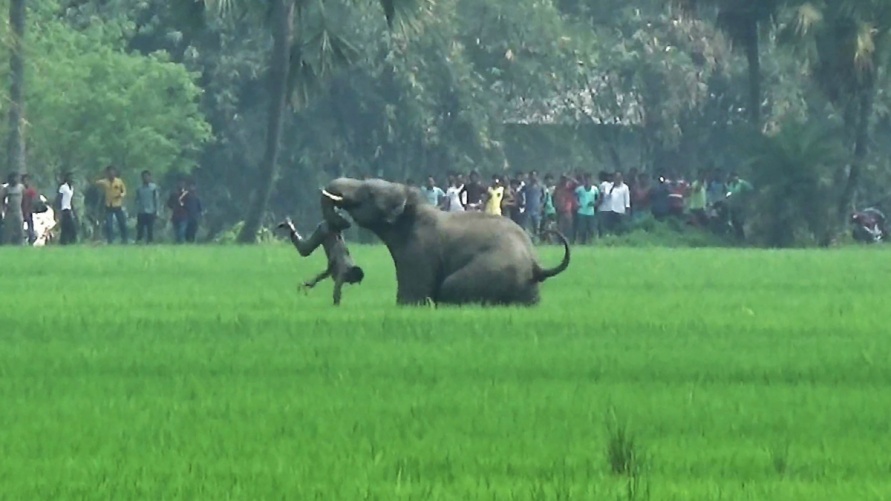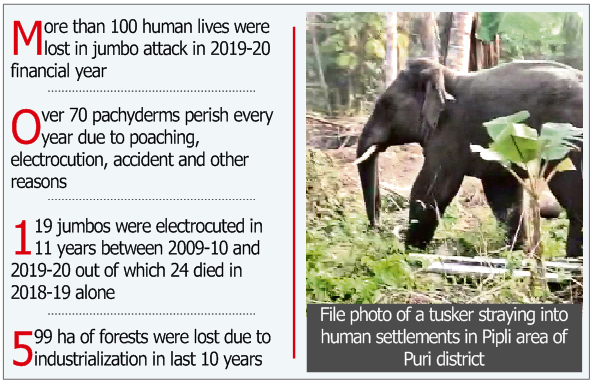Description

Copyright infringement is not intended
Context: Assam's forest department is planning to collar at least five elephants in high-conflict habitats in the coming months.
- It is being described as a step to study and mitigate human-elephant conflict in the state.
What are radio-collars?
- Radio collars are GPS-enabled collars that can relay information about an elephants’ whereabouts.
- They weigh roughly 8 kg and are fitted around the elephant’s neck.
- Collaring includes identifying a suitable candidate (generally an adult elephant), darting it with a sedative, and fitting a collar around the elephant’s neck, before the animal is revived.
How does radio-collaring help?
- The objectives are twofold
- Information from the GPS would help to track and study the movement patterns of the herd, across regions and habitats. This would help in understanding what is driving the conflict.
- The collars would serve as an early warning system, and if people know which direction an elephant is moving, they can prepare accordingly. And this would help mitigate conflict incidents.
- However, the main objective is long-term study of movement patterns.
- Gradually, as habitats are shrinking and traditional corridors are not in use anymore, it is imperative to study the range of travels and make an inventory of the new habitats.
- Collaring has been attempted in Chhattisgarh, Odisha and Tamil Nadu too.
How bad is human-elephant conflict in Assam?
- From 2010-2019, 761 people and 249 elephants were killed in Assam as a direct consequence of human-elephant conflict.
- More than 65 per cent of the habitat north of the river has been lost in the past few decades to agriculture and settlements, and conflict between humans and elephants has been steadily increasing ever since
What is Man-Animal Conflict (MAC)?
It refers to the negative interactions between people and wild animals, with consequences for both people and their resources and wildlife and their habitats (IUCN 2020).
- Over 2,000 people in India were killed by elephants while tigers claimed over 200 lives in the last five years, according to data provided by the government.
Common Reasons:
- Competition for shared natural resources between people and wildlife
- Human population growth and the transformation of land use.
- shrinking forest cover, poaching, rapid and unplanned urbanization
- electrification penetrating into forest areas
- increasing road density
- destruction of natural animal corridors
- agricultural expansion and cultivation up to forest boundaries.
Consequences of MAC:
- Influences food security of people and the well-being of both people and animals.
- serious global threat to sustainable development and conservation in urban and rural landscapes.
- destruction of crops and reduced farm productivity
- competition for grazing lands and water, livestock predation, injury and death to farmers,
- damage to infrastructure and
- increased risk of disease transmission among wildlife and
Conflict mitigation strategies includes:
- Lethal control
- Translocation of problematic animals
- Predator-deterring guard dogs
- Effective land use planning
- Compensation
- Spatial analyses and mapping conflict hotspots:
- Erection of fences or other barriers
- Managing garbage to prevent attraction of carnivores
- Improving community education and perception of animals
- population size regulation and
- endangered species preservation
- applying scientific research, sociological studies, and the arts to reducing conflicts.
Existing government policies:
- The government has come up with some policies to grapple with the problem: The compensation for human deaths has been increased from Rs 2.5 lakh to Rs 5 lakh;
- Project Elephant and National Tiger Conservation Authority (NTCA) guidelines have been issued to mitigate the conflict.
- Immune-contraception has been introduced in order to control the population of nilgai, monkeys and wild boars.

Conclusion:
- Resolving human-wildlife conflicts and fostering coexistence requires well-informed, holistic, and collaborative processes that take into account underlying social, cultural and economic contexts.
- Government must explicitly include human-wildlife conflict in national policies and strategies for wildlife management, development and poverty alleviation.
- At the national level, cross-sectoral collaboration between forestry, wildlife, agriculture, livestock and other relevant sectors is key to tackle this menace.
https://indianexpress.com/article/explained/assam-human-elephant-conflict-radio-collars-7636680/











